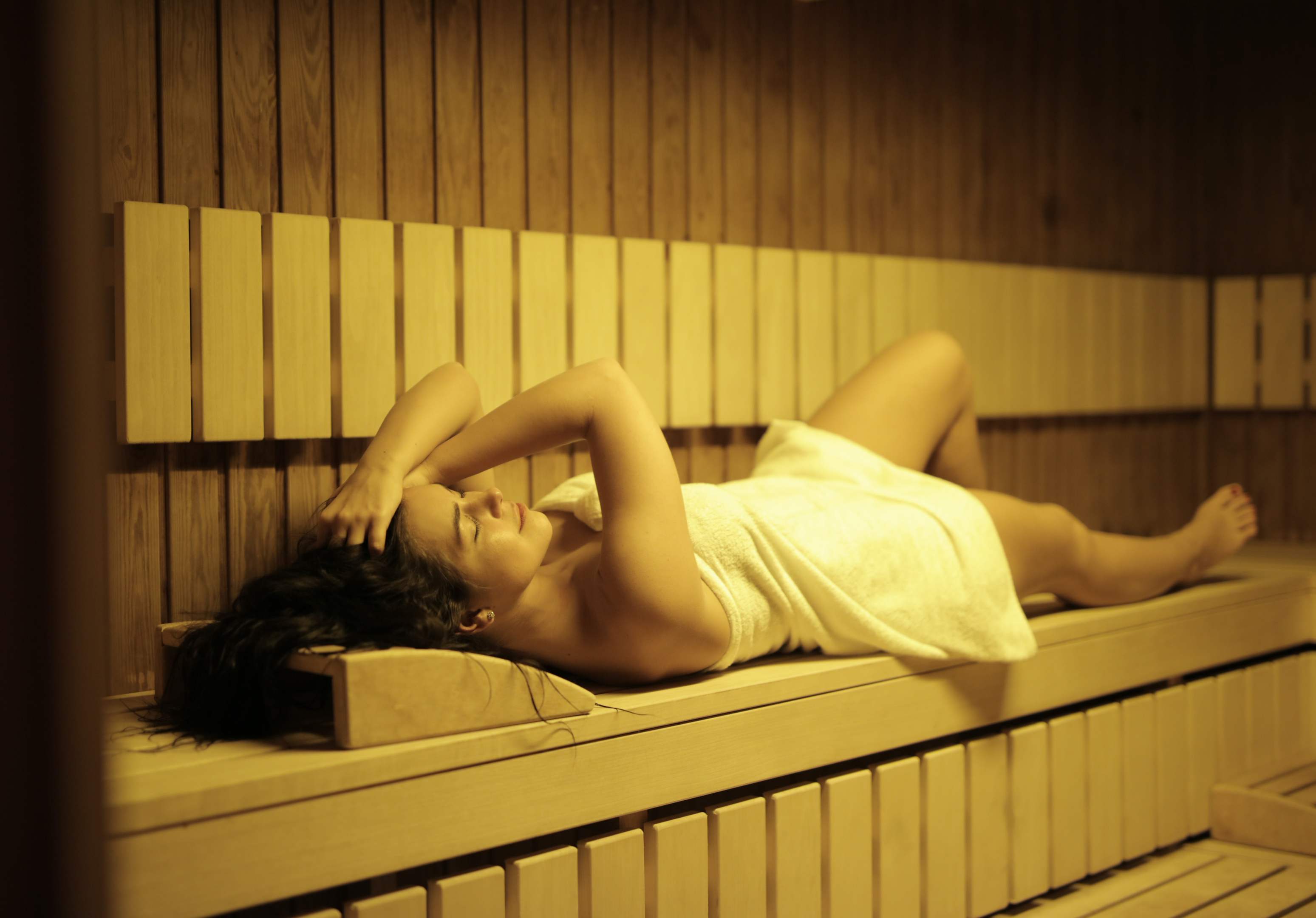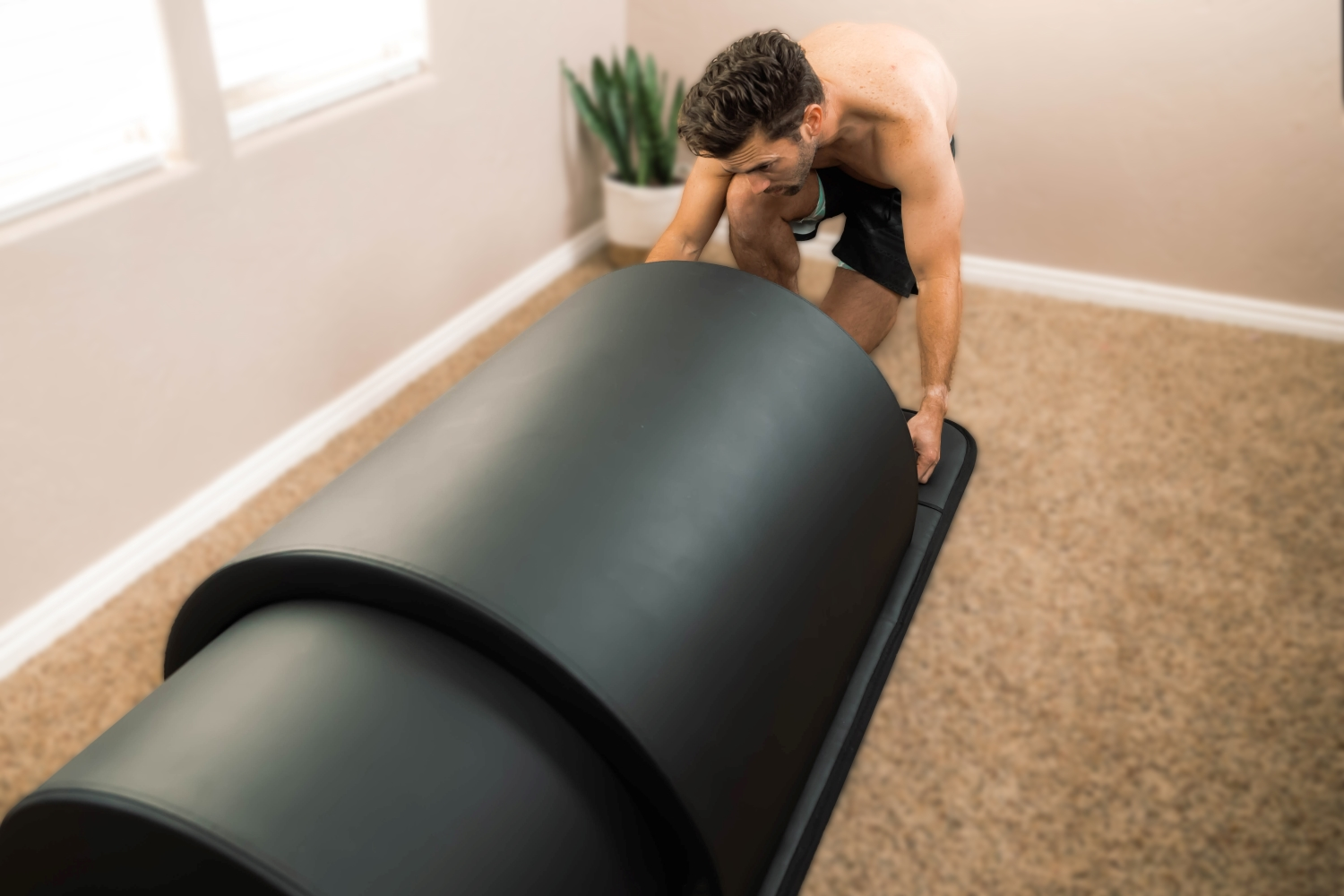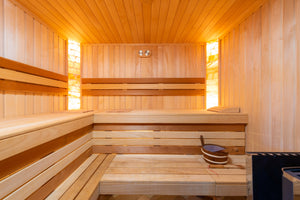How Hot is a Sauna?
Key Takeaways:
-
Traditional dry saunas require the highest temperatures.
-
Infrared saunas are the most effective at heating the body.
-
The body becomes heat adapted over time.
-
Steam saunas have the lowest temperature.
Sauna temperature range is heavily dependent on the type of sauna used. A traditional dry sauna, steam sauna and infrared sauna will have drastically different temperature range requirements in order to achieve maximum health benefits.
Generally speaking, a dry sauna will need to reach the hottest air temperatures in order to heat the body, in comparison to infrared.
A steam room is also at lower temperatures, but does not have all of the same health benefits that an infrared or traditional sauna does.
How Hot is a Traditional Dry Sauna?

-
176-200 degrees Fahrenheit for optimal health benefits
-
Dry, very hot heat
-
Difficult to tolerate with breathing and temperature on the skin
Traditional saunas that use dry heat to heat the body by creating hot air around you. This means the air temperature will need to be quite hot in order to achieve all benefits. This is also why dry sauna temperature ranges are the highest.
Typically, dry saunas will have maximum temperatures ranging from 176-200 degrees Fahrenheit. The ideal traditional sauna temperature is about 176-200 degrees Fahrenheit for maximum health benefits, depending on experience level.
This sort of dry heat makes for a very hot sauna that can be difficult to handle for long periods of time. Very experienced sauna users may even use up to 212 degrees Fahrenheit such as Joe Rogan.
How Hot is an Infrared Sauna?

-
120-150 degrees Fahrenheit for optimal health benefits
-
Pleasant, comforting, yet still hot air temperature
-
Easy to tolerate for longer periods of time
Infrared-style saunas do not need to feel nearly as hot as traditional dry saunas do.
Infrared saunas raise core body temperature by using infrared rays to penetrate deep below the skins surface. This is a much more efficient and effective method of raising core temperature, so minimum required temperatures can be much lower.
The typical temperature range for an infrared sauna is about 120-150 degrees Fahrenheit. Maximum temperatures may be around 150-195 degrees for these style of saunas.
It is common for companies to lower the output of the infrared heaters to save on costs, since the effective temperature range is lower, but we choose to provide the highest infrared sauna temperatures on the market, to satisfy all customers.
How Hot is a Traditional Wet Sauna?

-
Very Humid
-
Can soothe the lungs
-
Temperature is typically based on humidity and heat to create intensity
A steam sauna or wet sauna is typically going to have the lowest ideal sauna temperature, due to the large amount of humidity in the air.
These saunas heat the body by creating hot steam throughout the entire environment, this is great for your lungs, but not the most effective at raising core temperature.
You may find temperatures as low as 90 degrees Fahrenheit for steam rooms. The ideal sauna temperature for steam rooms is going to be around 120-130 degrees Fahrenheit in order to maximize health benefits of a sauna.
The rule of 200 is a good reference for gauging how hot a wet sauna should be for comfort. This rule states that you should take the temperature in the room and add in the humidity level and make sure that this number is not above 200.
For instance a 150 degrees Fahrenheit sauna plus 50% humidity level would be 200. This serves as a great starting point for wet sauna temperature.
Types of Heating Elements in Saunas
-
Infrared heaters
-
Basic hot rocks and water
-
Steam generators
-
Electric stoves
-
Gas stoves
The methods of heating in each type of sauna vary immensely. Traditional dry saunas typically use electric or gas stoves in order to can a hot and dry environment.
Wet saunas can be heated through pouring water onto hot heating elements such as heated rocks in the most traditional methods. Infrared-type saunas use electric heaters that output infrared rays into the body.
Types of Infrared Sauna Heating Elements

Carbon heating elements
Carbon fiber heating elements have been commonly used in infrared-style saunas for their fast preheat times, low EMF and small sizing. These heating elements are generally the best and the only downside being their maximum intensity may not be quite as high as ceramic in some cases.
Ceramic Heating elements
Ceramic heating elements are typically used in larger, cabin-style infrared-style saunas. These heating elements are large, require more electricity and may be harder to mitigate electric fields. On the contrary, they do output quite a lot of heat intensity, at the additional cost of long preheat times up to even an hour in some cases.
Steam Room Heating Elements
Steam rooms mainly focus on creating extremely humid environments, even more so than a wet sauna. Steam sauna temperature is much lower and uses an electric heater that outputs tons of steam.
For a larger steam room, these heating elements can be massive and require a large amount of gas or electric power.
Best Beginner Sauna Temperature

Beginner Traditional Dry Sauna Temperature
150-175 Degrees Fahrenheit
As someone new to a sauna session, you may find the high temperatures of a traditional sauna to be quite uncomfortable. This may make it difficult to achieve temperatures around 175 degrees Fahrenheit for health benefits.
We suggest starting out with 150 degrees, and building up a heat exposure tolerance from there, even though the best traditional sauna temperature is about 175 degrees Fahrenheit minimum.
Beginner Traditional Wet Sauna Temperature
130-140 Degrees Fahrenheit
Wet saunas are typically a bit easier to handle in terms of high temperatures. The moisture makes it more tolerable for most people, and the humidity levels allow you to run the sauna at lower temperatures and still get the benefits.
We suggest starting with about 130-140 degrees Fahrenheit and building up from there after.
Beginner Infrared Sauna Temperature
120-150 Degrees Fahrenheit
Infrared-style saunas are truly great for people who are not very experienced with heat exposure. The temperature of infrared saunas can still be as low as 120 degrees Fahrenheit and still get the benefits. This is because the infrared rays directly heat the body and not just the air.
Since the air temperature will be much lower, it is far easier to tolerate infrared saunas for longer periods of time.
We feel that infrared saunas are the easiest to achieve maximum health benefits from due to their overall heat comfortability level.
We recommend users start with 120 degrees Fahrenheit and progress upward as the body becomes adapted to the exposure.
Heat Adaptation with Sauna Exposure

The best sauna temperature for you will likely increase with frequent sauna use. Traditional sauna temperature can get very hot and some people are able to adapt to temperatures of even 220 degrees Fahrenheit.
This process is called hyperthermic conditioning. As the body gets used to higher and higher temperatures, it is able to tolerate much more heat stress over time.
This is why if you have a sauna of your own and use it frequently, you may progressively increase the heat output over time to reach your desired temperature.
The body adapts based on duration of core body temperature increase. This means even with infrared heat you will still become heat adapted, even though the actual air temperature may not feel to hot.
Infrared waves heat the body directly, which may make the process of hyperthermic conditioning actually easier to perform, since you don't have to endure hot, dry air onto your face or body.
Benefits of Hyperthermic Conditioning
-
Performance boost
-
Increased endurance
-
Better regulated core temperature when exercising
-
Reduces glycogen store depletion
-
Improves thermoregulation
-
Reduces heart rate and cardiovascular strain
Hyperthermic conditioning is somewhat similar to basic cardiovascular conditioning. It is a term coined by Dr. Rhonda Patrick, As the body gets repeated heat exposure, it slowly becomes more used to that stress and tolerates it better. Meaning it may take higher temperatures to heat the body to the same extent.
This is hugely beneficial in performance because core temperature raises in exercise and contributes to raised heart rate, glycogen usage, etc. Adapting the body to heat stress will result in several performance benefits and increased overall health.
See For Yourself

1Love Saunas are the hottest far infrared saunas on the market. The 1Love Sauna Dome is also extremely portable and can be placed virtually anywhere in your home. This allows you to leverage all of the benefits such as hyperthermic conditioning, simply from the comfort of your own home. 30 days money back with financing available.


